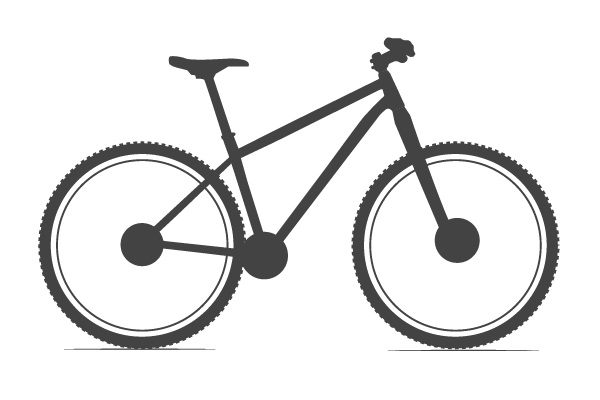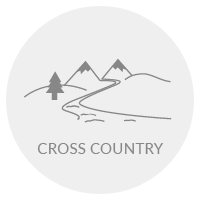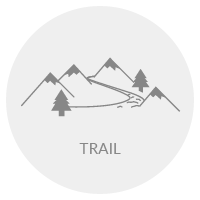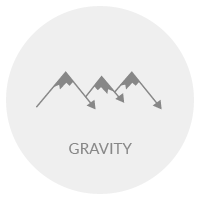Featured Brands
Recommended Products
WINTER20
|
Get free shipping, on most items, with your $50 purchase today! Same day shipping on most orders if placed by 3pm PST.
PLEASE NOTE:
This offer is only available to physical shipping addresses in the 48 continental United States (no PO Boxes), and some exclusions apply.
Oversize Charges
Some large and/or heavy items are subject to additional oversize charges that are separate from standard shipping costs.
Bike Build Process
All bikes are built, tested, tuned, and ready to ride upon shipment. The bike build process typically takes 2-3 days to complete depending on the bike model and the complexity of the build.
Stock Status
Orders for in-stock items placed by 3PM PST usually ship on the same day. Orders that include special-order or backordered items may be subject to shipping delays depending on product availability. Refer to estimated delivery times in cart when selecting shipping options.

Our Gear Advisors are Ready to Help.
Jenson USA carries one of the most extensive selections of curated bike gear online. We’ve developed learning guides to aid you in making informed decisions and we have backed this up with our expert Gear Advisors who are available by phone, chat, or email 7 days a week.
Remember finding that perfect construction lot while cruising around the neighborhood on your bike as a kid. The pristine mounds of loose fill dirt and crawler paths that would rattle your chain loose were the paramount of rideable obstacles. Those sensations experienced on the disturbed landscape were forging your interest in mountain biking. Though our age and perspectives have changed, the desire to ride uneven terrain by bicycle is still present. It started with just the air in your tires for vibration damping and evolved to suspension forks and rear shocks. Suspension is the nervous system of the bike. It is the response to all the variables you encounter while on the trail. Suspension does much more than just smooth out the bumps. It provides traction across slippery roots, support when landing off drops and helps hold speed through turns. This piece will discuss how suspension works and the travel lengths associated with the different trails and categories of mountain biking.
A fork and a shock are the two main suspension units found on mountain bikes. A fork is the suspension unit that mounts to the frames headtube and holds the front wheel. The shock is the suspension unit incorporated into the frame and governors the rear wheels movement over bumps. Fork in the front and shock in the back.Not all bikes have suspension so there are a few terms defining which suspension units are included with what frames. The first is a rigid frame with no suspension.
A rigid frame is designed without suspension. Who needs it! The jaw rattling descents and pure energy directed straight to the pedals is the driving force of this ride experience. Having even a minimal amount of suspension, around 80-120mm, will reduce pedaling efficiency. The goal of a rigid frame is to maximize pedaling efficiency and be super lightweight. Rigid mountain bikes are found mostly in the XC category for racing applications.
SHOP RIGID BIKES
A hardtail frame is designed to ride with only a front suspension fork. The theory behind a hardtail is that your legs act as the rear suspension of the bike to soak up elements encountered on the trail. There are numerous hardtail options available for Cross Country. Looking back on How To Choose A Mountain Bike 101, you will notice that the main focus of XC frames is weight and pedaling efficiency. A bike with rear suspension will be less efficient pedaling than a bike without rear suspension. When the rider is standing on the pedals, climbing a hill, a portion of the exerted energy from the rider will go into compressing the suspension, front and rear. This bit of energy lost for some riders is enough to choose a hardtail. On technical terrain the hardtail will demand more energy and precision to control. XC hardtails come with forks in the suspension travel range of 80- 120mm and Trail hardtails will come with forks in the 120-140mm range
SHOP HARDTAIL BIKES
Found in all categories are bikes designed around having a suspension fork and rear shock. The two suspension units work together giving the rider a balanced platform capable of navigating varied terrain. Where a hardtail has to choose a specific line through a technical trail section, the dual suspension can glide through with less effort and more speed. Dual suspensions bikes can also be called "Full Suspension" and are found in the Cross Country, Trail, Gravity and Fatbike categories of mountain biking.
SHOP FULL SUSPENSION BIKES
A Trail bike is designed to handle varied terrain including berms, jumps, rocks and roots but still pedal efficiently up climbs. A trail bike rider is focused on sensations found while carving through turns and navigating through technical terrain including root splays and rock gardens. Trail bike riders generally have a relaxed paced ride with friends and hopefully beers awaiting you in a cooler at the end of the ride.
The first stage of the suspension-cycle where the shock or fork is compressed from forces encountered on the trail.
The second stage of the suspension-cycle where the fork or shock returns from its compressed state to the starting position.
The location where a fork or shock has reached maximum compression.
Lets go to yoga class. Close your eyes and imagine you are looking through some winding, forested single track. As your cruising down the trail, trees and bushes passing by, your focus is on the ribbon of dirt leading you forward. Ahead, and approaching quickly, is a splay of roots crossing the trail. The dirt in between the roots has eroded away creating an obstacle to ride over. This is one of the most common scenarios you will encounter on the trail and a suitable example to explain basic suspension movements. The first suspension unit to encounter the protruding root is your fork. As the wheel makes contact with the root the fork will begin to compress. Compression is the movement of the lowers towards the crown of the fork.
As the tire makes contact, the fork compresses, allowing the wheel to roll over the root and continue forward. Bottom Out is when the fork compresses to its maximum allotted travel. If a feature on the trail has taller roots or a bigger drop than usual, it is likely and ok, to reach bottom out. The amount of travel used on your suspension is indicated buy a rubber O-ring on the stanchion tube. Compression is the first half of the suspension cycle followed by rebound. After the fork has compressed to pass over the root, the lowers will retract away from the crown and back to the starting position. This retracting movement is called rebound. As the bike continues to move forward the rear wheel will encounter the root. As the rear wheel contacts the root, the stanchion will compress into the air-can. After the wheel passes over the root, the stanchion will rebound to its starting position.
Compression and rebound are the main movements in the suspension cycle. This cycle is continuously happening while riding and even the smallest bumps activate compression and rebound. Suspension as a concept is easy to digest but there are a few more adjustments found on most fork and shocks that add complexity to the cycle.
Tuning is the ability to adjust rebound, compression, bottom out and pedaling platform on a shock or fork. These elements of the suspension cycle can be regulated externally or internally to make a fork or shock perform in a desired manner. Compression adjustments can make the suspension firm or supple. Rebound adjustments make the suspension return to the starting position at a fast or slow speed. Fast rebound makes the bike feel lively or poppy. Slow Rebound makes the bike feel controlled and grounded. Volume Reducers will add support if you are bottoming out to regularly, given your fork and shock air pressure is correctly adjusted. All these adjustments make the suspension personal or cater to a specific trail style. A pedal or climbing platform is often designed into forks and shocks via switch or knob. This adjustment allows the rider to drastically stiffen up the suspension to maximize pedaling efficiency while on climbs. Just remember to flip the switch or knob back to descending mode or the ride down will be a lot rougher.

80-120mm or 3in - 4.5in of suspension travel is designated for the Cross Country category of mountain biking. Since XC trails are less technically demanding, their suspension is designed to be supportive but relative to the terrain. All 80-120mm fork and shocks are air sprung versus coil sprung. Air sprung suspension is lighter and optimal for XC terrain. Suspension in this travel range usually comes with a lock out lever or remote to switch between climb and decent modes on the fly.
80-120mm of travel is best suited for flowy single-track with easy to moderate technical sections. Difficult sections in these trails do not frequently demand more than 120mm of travel and sections that do usually have go-arounds. Branching out and pushing the bikes into steeper more technical terrain is not uncommon, but the general consensus is the more difficult single track is reserved for the Trail category. The 80-120mm XC travel is a balance between needed suspension and pedaling efficiency. If your local trails are fast pasted with rollers and smooth terrain, then a bike in the XC suspension travel range may be a good fit.

This amount of travel is allotted for the Trail bike category. Trail bike suspension is designed to handle a wider array of terrain than its XC counterpart. Suspension, in the range of 120mm-170mm, helps wheels roll over eroded root splays, handle bigger drops and go faster on descents. This is the category where suspension becomes less about weight and more about feel and tunability. Words like supple, sensitive and supportive are often used when describing fork and shock sensations. In this range the majority of forks and shocks will be air sprung but the options for coil sprung suspension is increasing. Lightweight coil springs and their performance benefits are being explored and widely accepted in the 120-170mm trail category.
If you are interested in a Trail bike with 120-140mm of suspension travel the trail options are plentiful. Recreational locations with mountain bike trails, regardless of elevation, have routes where these bikes will shine. Drops, roots splays, jumps, berms and all the fun features that trail bikes are designed for, are found on these trails. Look for the trails on the map that are color-coded blue (intermediate) and black (advanced) for trails with the technical features that 120-140mm suspension was designed for.
If the trail systems around you have elevation relief similar to Squamish, BC, Sedona, Arizona or Pisgah National Forest in North Carolina, then the 140-170mm Trail/All Mountain bike might be a worthy option to consider. Trails in these areas are noted for steep and technical terrain filled with jumps, berms, rock-rollers and rock gardens. Riding difficult terrain smoothly is the main goal in this category and the additional suspension travel is a key component. If you are interested in a 140-170mm All Mountain bike, trails signed with the ever so inviting Black Diamond or Double Black Diamond markings are on your radar. Flip the suspension switch to descend mode and go find your limit on some dauntingly steep, technical trail.

This amount of travel will be found on Gravity or DH bikes. It is here that the use of dual crown forks in the 200mm range becomes popular. Dual crown forks are burly additions to the fork family that have crowns above and below the headtube. The two crowns are added for rigidity when the forks are pushed to the limit. It is on Gravity bikes where coil shocks and forks become widely used. Coils are inherently heavy but out preform air sprung suspension in heat dissipation, sensitivity and maintenance. Weight is everything. The lighter air sprung suspension is making a huge push in the gravity bike realm. Since the bikes are already on the heavy side, engineers are designing air shocks and forks that try to mimic coil performance and further reduce weight. Climbing platforms are removed from DH suspension but regulation of high and low speed compression and rebound circuits are tunable through various knobs and dials.
In areas of high elevation relief downhill bikes become popular. The trails are steeper, drops are bigger and jumps are the largest of all the categories. Bike Parks or trails with a shuttle road to the top are the stage for this suspension range. Since the forks and shocks are extra sensitive and have the largest amount of suspension travel, bikes in this category are very location dependent to ride. Selecting a bike in this travel range is usually an easy decision if there are DH trails or bike parks to visit regularly.

When selecting the suspension travel right for you it is important to do your research on the trails around you and what experience you are looking to get out of mountain biking. There will be a bike that comes equipped with the right combination to make the most out of your local trails. Be honest with yourself about what trails are available and try to make an educated decision about the suspension range best suited for you and the surrounding terrain.
SHOP BIKESWe want to make sure you can go from shopping to riding as soon as possible. Our expert Gear Advisors are available to help you cater your protection setup with just the right combination of protection and comfort. Contact a Gear Advisor: 888-880-3811, Mon-Fri: 7:30am to 7pm, Sat-Sun: 9am to 5pm (PST)
SAVE 20% ON FIDLOCK
SHOP NOW
SHIP ALMOST ANYTHING & SAVE
SHOP NOW